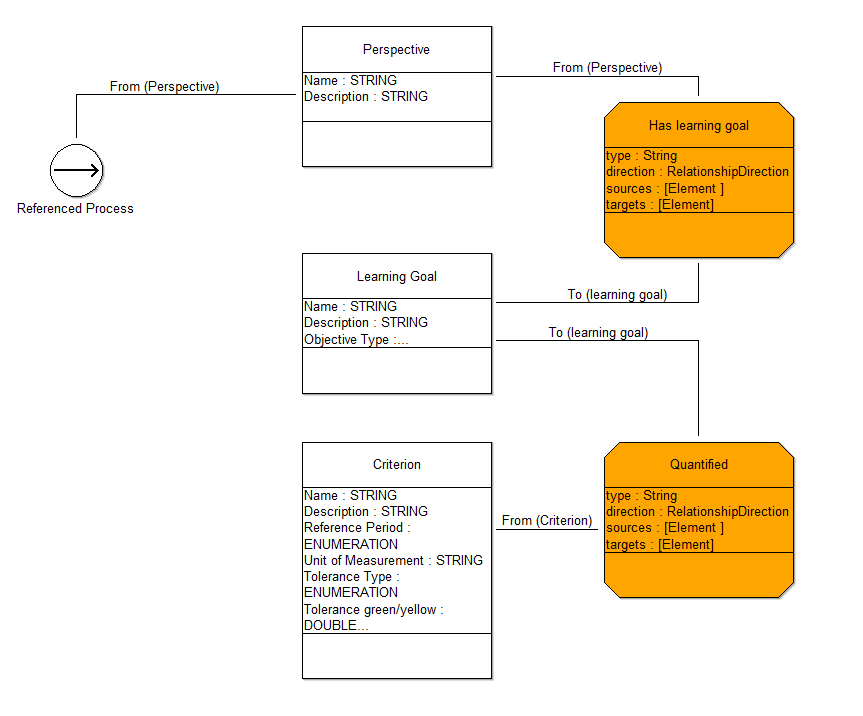 Developer Resource: Modelling Language
Developer Resource: Modelling Language
Goal:
Design a modeling tool in the modeling method design environment.
Case:
Development of a process-driven modelling toolkit for public administration integrated with collaborative tools and services of the project platform.
LearnPAd Metamodels:
The following metamodels are designed based on (LearnPAd, 2014) (OMG, 2014) (BOC, 2009) and refined based on discussion in LearnPAd Technical Meeting Rome during 26-27th of November, 8th-9th January, and on discussion during weekly WP3 Teleconferences.
The figure below should give you an overview of the existing model types.
- Process Metamodel
The Business Process Modeling Notation (BPMN) is a standardized language for describing processes in an enterprise.
The primary goal of BPMN is to provide a notation that is readily understandable by all business users, from the business analysts that create the initial drafts of the processes, to the technical developers responsible for implementing the technology that will perform those processes, and finally, to the business people who will manage and monitor those processes. Thus, BPMN creates a standardized bridge for the gap between the business process design and process implementation.
The objective of BPMN is to support business process management, for both technical users and business users, by providing a notation that is intuitive to business users, yet able to represent complex process semantics.

- Organizational Structure Metamodel
Organizational structure models describe the structure of an organization (organization chart). It specifies the organizational units, the roles and the individuals that are working within an organizational unit. Organizational structure models can be built hierarchically using organizational sub models to e.g. illustrate a detailed structure of a working environment.
Organizational models are often used in combination with the business process model, as it provides the actual work-force that performs the business process.

- Document and Knowledge Metamodel
Document and knowledge model is a pool on classified links to the "raw material" in knowledge management, the actual knowledge. The elements of this model are documents, knowledge products, -sources, and - resources, which are utilized in the processes (input, output to activities etc.).
These elements contain information and support the execution of an activity. The required elements are referenced to from the activities of a business process model.
Document and knowledge resource models can also be built hierarchically using knowledge sub models to e.g. illustrate a detailed structure of documents.

- Key Performance Indicator Metamodel
Since performance measurement is fundamental for managing a business the model type 'key performance indicator (KPI) model' provides an overview of strategic and operational goals.
For this purpose, key performance indicators which are the target levels achievement of those goals, are defined in the KPI-models.
In these models one can evaluate also the gap between the target and the current value. If the gap is bigger than the defined tolerance value an alert is triggered where the graphical representation of the KPI changes its color. The obtained knowledge of the gap shows where to make changes to improve performance.

- Business Motivation Metamodel
- Case Metamodel
 www.adoxx.org
www.adoxx.org